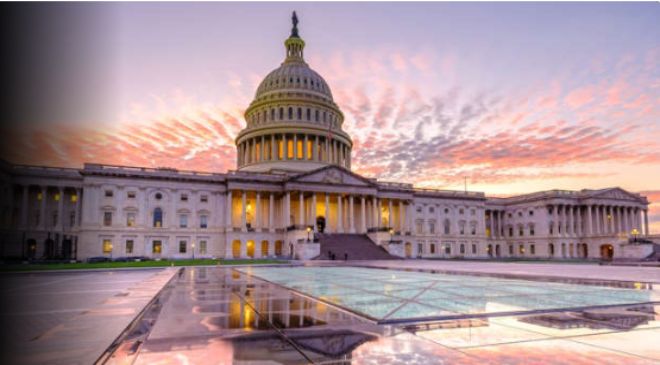With the recent passing of the Secure Act 2.0 in the House of Representatives, which would require all business owners to offer retirement benefits to all eligible employees, succeeding as a small business owner is becoming increasingly more difficult.
With only four in 10 businesses with less than 100 employees offering retirement benefits due to a perceived lack of financial incentives or demand from employees, is the new 401(k) retirement bill going to have the impact the government thinks it will? Namely, it seems important to address the impact of those mandates on small business owners.
In Chinese, the same word for “crisis” is “opportunity.” After analyzing the massive crisis that would ensue after forcing small business owners all over the country to take on hundreds of additional hours of administrative work, we saw an opportunity to reimagine retirement.
Out of this impending crisis came our opportunity to help small business owners with an all-digital solution that meets their needs, is affordable and helps teach their employees everything they need to build a solid financial foundation and future.
As accountants all over the country get ready to meet state and perhaps federal compliance rules so that they aren’t caught without a solution, we took some time to dig deeper into what the new 401(k) retirement bill actually includes. These are seven compliance pitfalls to watch out for, including a few tips on how to make sure you end up with the right option for your business.
1. There is a difference between an IRA and a 401(k)
While you’re exploring your options, we also urge you to explore the differences between setting up an IRA versus a 401(k) plan for your employees. You’ll want to ensure that you, as the business owner, are aware of the tax benefits, regulatory costs and risks associated with each type of retirement account.
As an investment professional, I’ve explored the various benefits and differences between IRAs and 401(k)s and I found the SIMPLE IRA to be the ideal retirement structure for small business owners.
2. Offer an employee retirement package that benefits your employees
If you’re going to be required to offer a retirement plan, opt for the one that’s actually going to help your employees learn how to build wealth. Oftentimes, state-run programs aren’t the best, most comprehensive option.
As a player in the retirement and pensions industry, my company has worked to answer these questions, issues and mandates. What we’ve found is that business owners are not only looking to meet these requirements but are also interested in accessing better investment options, a much better regulatory framework and greater flexibility.
Therefore, offering a retirement package that allows you to tap into the tertiary benefits of retirement programs for your employees is a great move. Something like a SIMPLE IRA is going to help you meet those requirements, enjoy greater flexibility and — perhaps best of all — it can help you attract and retain top talent and increase employee engagement.
3. You can get tax credits for setting up a 401(k), IRA or similar plan
Worried that setting up a retirement plan for your employees is going to cost your small business? The IRS has a special tax credit that can help you offset the costs of setting up a plan.
Through the Retirement Plans Startup Costs Tax Credit, you’re eligible to claim a tax credit of up to $5,000, for three years (a total of $15,000), for the “ordinary and necessary costs” of starting a SEP, SIMPLE IRA, or another qualified plan. Take advantage of this credit.
4. Secure Act 2.0 isn’t new
The Secure Act 2.0, formally known as the Securing a Strong Retirement Act, H.R. 2954, was approved on Tuesday, March 29. However, as the name suggests, it’s not necessarily new. The first Secure Act was actually passed in 2019 in a unanimous, bipartisan voice vote.
What’s new is some of the specifics surrounding the requirements. For example, with the new 401(k) retirement bill, employers would have to not only enroll eligible workers in a 401(k) plan, but they’d have to enroll them at a rate of 3% of their salary. That would increase yearly until the employee is contributing up to 10% of their salary.
5. Businesses with less than 10 employees are excluded
While most state-level retirement legislation has mandated that businesses with five or more employees offer retirement benefits, the Secure Act 2.0 actually increases that threshold, favoring smaller businesses.
With this new federal legislation, businesses with 10 or fewer employees would be excluded from the mandate and, what appears to be, any penalties that businesses might incur from not complying. The exclusion also applies to businesses that are less than three years old.
6. There would be an increase to the starting age for required minimum distributions
If the Secure Act 2.0 passes in the Senate, it would increase the starting age for required minimum distributions. Currently, this age is 72 (it went up from 70 ½ as a result of the first Secure Act), but with the new legislation, that would increase to 73 if passed in 2022, to 74 by 2029, and to 75 by 2032.
7. States are already offering state-run retirement programs
At the time of writing this article, more than 30 states have considered or begun to implement state-mandated retirement plan legislation. This includes CalSavers in California, Illinois Secure Choice in Illinois and MyCTSavings in Connecticut.
While it’s unclear how this might change if the Secure Act 2.0 is passed on a federal level, you aren’t currently required to opt into your state’s plan if there is one. Ensure that you’re compliant but also explore your options.
Most state legislation notes that while you have the option to sign up for the state-run program, you also have the option to enroll your employees in another compliant program.
The bottom line
The Secure Act 2.0 is slated to go up for vote in the Senate before the end of 2022, so keep an eye out for any updates while you also start to consider other options available to you outside of government-run programs.
While it might currently be tempting to go with the free, state-run option (assuming your state offers one), it pays to look into how the entire retirement package is going to translate into increased employee engagement, improved talent retention, more tax credits, and reduced regulatory issues.







































